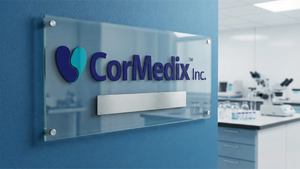- Strategies designed to guard against healthcare cost inflation, a leading financial concern1 for Americans, businesses, and governments
- Milliman’s data on healthcare cost trends and decades of industry expertise serving insurers and providers to inform first-of-their-kind ETFs
- Leading actuarial consultant to marry practice insights with managed risk investing to build ETFs that seek to safeguard and grow financial well-being in currently unaddressed areas
Milliman, Inc., a premier global consulting and actuarial firm, today announced plans by Milliman Financial Risk Management (FRM), a global leader in financial risk management to the retirement savings industry advising on $229 billion, to list two active exchange-traded funds to meet the rising cost of U.S. healthcare. Filed with the SEC, the Milliman Healthcare Inflation Guard ETF (MHIG) and the Milliman Healthcare Inflation Plus ETF (MHIP) will be the first members of a distinct lineup of ETFs aimed at solving some of the most prominent but unaddressed financial risks that challenge both workers and retirees, as well as companies, institutions, and governments.
Intending to list in Q1 2026, the ETFs are:
- The Milliman Healthcare Inflation Guard ETF (MHIG) will seek to meet the healthcare costs for an average individual utilizing an employer-provided health plan in the United States over time, while
- The Milliman Healthcare Inflation Plus ETF (MHIP) will aim to exceed U.S. healthcare cost inflation over time.
“With Milliman ETFs, we’re drawing on nearly 80 years of actuarial expertise to address financial risks that are impacting society at every socioeconomic level. The rising cost of healthcare is such a complex, foundational issue—and it is one that our clients and most all Americans have been grappling with. Healthcare inflation is a great place for us to start carefully crafting ETF solutions, and they fit squarely with Milliman’s mission to protect the health and financial well-being of people everywhere,” said Bret Linton, Milliman’s Chair.
“Following multiple years of healthcare cost inflation well above the rate of goods in the broader economy, health insurance premiums are set to rise the most in 15 years2. Managing and planning for cost increases, also known as the healthcare trend, has been central to our work, but clients have lacked a formulaic way to invest this multi-hundred-billion-dollar pool of capital that aims for an investment return equal to healthcare inflation. The data-driven investment solutions we intend to offer will provide a new tool for all stakeholders in the industry—and individuals—to manage this risk and potentially realign incentives,” said Hans Leida – Principal & Consulting Actuary.
Milliman is the world’s preeminent healthcare consultancy. Employing nearly 600 credentialed health actuaries as well as clinicians, seasoned technologists, and other professionals, the firm specializes in helping the full spectrum of health sector stakeholders—payers, providers, life sciences companies, health benefits providers, and regulators—understand and mitigate risk. With more than 1,000 clients subscribing to its healthcare analytics, the firm’s capabilities, insight, and visibility into healthcare trends are unmatched.
Additionally, Milliman publishes the most precise and up-to-date measure for healthcare costs and inflation forecasting in America, the Milliman Health Trend Guidelines™ (HTG). The HTGs are a series of indices providing data on the cost, utilization, and unit costs of healthcare services. The information used to calculate the indices is provided by leading health insurance plans and data firms, covering approximately 60 million insured covered individuals in the U.S., representing about 40% of the total commercially enrolled private market. The HTGs provide insurers, healthcare providers, and employers monthly information on healthcare expenditures and utilization. Milliman’s Healthcare Inflation ETFs will be patterned on the Health Trend Guidelines™.
What are Milliman Healthcare Inflation ETFs and how do they work?
Milliman Healthcare Inflation ETFs will use an actively managed mix of Health sector and related equities, bonds (U.S. Treasuries, TIPS, and corporate bonds), and alternatives, including commodities and liquid alts strategies, in seeking to generate returns (before Fund fees and expenses) that generally correlate with the healthcare cost changes for an average individual utilizing an employer-provided health plan in the United States.
The multi-asset portfolios will use a quantitative model based on Milliman FRM’s extensive research and analysis on the assets’ interrelationships and interactions with the path of healthcare inflation. The model aims to dynamically manage volatility to minimize portfolio losses during drawdowns in the underlying assets, which could prevent the ETFs from corresponding with inflation over time.
“Today marks an exciting day for Milliman, our clients in the health ecosystem, and their end clients: the American people. With the Healthcare Inflation ETFs, we have developed a set of initial investment strategies guided by our unique data and analytics to address a risk that insurers, hospital systems, provider groups, and individuals all share: the rising cost of healthcare. We feel these first-of-their-kind ETFs could be a core holding for health insurers and providers in their capital base, as well as for individuals within their Health Savings Accounts (HSA) or retirement portfolios,” said Adam Schenck, Principal & Managing Director, Fund Services, Milliman FRM.
Individuals or their financial advisors could allocate to Milliman Healthcare Inflation ETFs in their tax-advantaged Health Savings Account (HSA), 401(k), and/or individual retirement accounts (IRAs). Currently, there is an estimated $150 billion in HSAs3, $13 trillion in defined contribution plans, and $18 trillion in IRAs4.
Milliman’s 2025 Retiree Health Cost Index5 estimates that the average 65-year-old couple retiring in 2025 will spend approximately $588,000 for medical costs in their retirement, assuming enrollment in Medicare; however, this excludes costs for long-term care, dental, or over-the-counter medications. According to the 2025 Milliman Medical Index (MMI)6, the cost of healthcare for a hypothetical family of four in a typical employer-sponsored health plan is now $35,119, up from $12,214 in 2005 at the launch of the MMI. This near tripling in cost represents a 6.1% average annual increase from 2005-2025. Healthcare is the 4th largest consumer expenditure, behind only housing, transportation and food, according to Labor Department data, and total healthcare related spending constitutes 17.6% of U.S. GDP, according to Centers for Medicare and Medicaid Services 7.
The initial prospectus for the Milliman Healthcare Inflation Guard ETF (MHIG) and the Milliman Healthcare Inflation Plus ETF (MHIP) can be found on SEC Edgar here: sec.gov/Archives/edgar/data/2096904/000199937125017934/mhig-n1a_111325.htm.
“More broadly, the Milliman ETFs lineup will join our consultancy’s wide-ranging expertise and proprietary data with FRM’s quantitative investment capabilities to create strategies that address underrepresented risks faced by both individuals and institutional investors. Until now, savers, companies, and governments have used more traditional investments and portfolio approaches that have not necessarily matched the specific risk profiles of the corresponding financial challenges. We look forward to listing the Milliman Healthcare Inflation ETFs and sharing more purpose-built solutions aimed at protecting investors’ financial well-being soon,” added Schenck.
ABOUT MILLIMAN
Milliman leverages deep expertise, actuarial rigor, and advanced technology to develop solutions for a world at risk. We help clients in the public and private sectors navigate urgent, complex challenges—from extreme weather and market volatility to financial insecurity and rising health costs—so they can meet their business, financial, and social objectives. Our solutions encompass insurance, financial services, healthcare, life sciences, and employee benefits. Founded in 1947, Milliman is an independent firm with offices in major cities around the globe. Visit us at milliman.com.
ABOUT MILLIMAN FINANCIAL RISK MANAGEMENT LLC
Milliman Financial Risk Management LLC FRM is a global leader in financial risk management to the retirement industry, providing investment advisory, hedging, and consulting services on approximately $229.2 billion in global assets as of September 30th, 2025. With a specialty in options-based defined outcome funds, including buffer strategies, Milliman FRM is one of the largest and fastest-growing subadvisors of ETFs. For more information about Milliman FRM, visit https://frm.milliman.com/en/.
|
1 |
|
According to KFF’s survey published July 11, 2025, “Americans’ Challenges with Health Care Costs”, “Two-thirds of adults say they are worried about being able to afford the cost of health care, unexpected medical bills,” which is larger than the share expressing worry about affording housing, transportation, utilities, or food costs. Illustrating the extent of the financial risk of rising healthcare costs, according to the 2025 Milliman Medical Index (MMI), the cost of healthcare for a hypothetical family of four in a typical employer-sponsored health plan is now $35,119, up from $12,214 in 2005 at the launch of the MMI. This near tripling in cost represents a 6.1% average annual increase from 2005-2025. |
2 |
|
According to a September 10th article in The Wall Street Journal, "Health Insurance Costs for Businesses to Rise by Most in 15 Years". |
3 |
|
According to Devenir, via PLANADVISER on April 3, 2025: HSA Assets Grow to Nearly $147B in 2024. |
4 |
|
According to the Investment Company Institute as of June 30, 2025: Retirement Assets Total $45.8 Trillion in Second Quarter 2025 |
5 |
|
|
6 |
|
|
7 |
|
Labor Department and Centers for Medicare and Medicaid Services data cited in The Wall Street Journal, December 18, 2024: “Why Are Americans Paying So Much More for Healthcare Than They Used To?”. |
Disclaimers:
The recipient should not construe any of the material contained herein as investment, hedging, trading, legal, regulatory, tax, accounting or other advice. The recipient should not act on any information in this document without consulting its investment, hedging, trading, legal, regulatory, tax, accounting and other advisors. Information herein has been obtained from sources we believe to be reliable but neither Milliman Financial Risk Management LLC (“Milliman FRM”) nor its parents, subsidiaries or affiliates warrant its completeness or accuracy. No responsibility can be accepted for errors of facts obtained from third parties.
The information, products, or services described or referenced herein are intended to be for informational purposes only. This material is not intended to be a recommendation, offer, solicitation or advertisement to buy or sell any securities, securities related product or service, or investment strategy, nor is it intended to be to be relied upon as a forecast, research or investment advice.
The products or services described or referenced herein may not be suitable or appropriate for the recipient. Many of the products and services described or referenced herein involve significant risks, and the recipient should not make any decision or enter into any transaction unless the recipient has fully understood all such risks and has independently determined that such decisions or transactions are appropriate for the recipient. Investment involves risks. Any discussion of risks contained herein with respect to any product or service should not be considered to be a disclosure of all risks or a complete discussion of the risks involved.
Milliman FRM is an SEC registered investment advisor (SEC#:801-73056) since 2012. You can find Milliman FRM’s ADV filings at https://adviserinfo.sec.gov/firm/summary/159377.
Milliman Health Trend Guidelines™ – a series of indices providing data on the cost, utilization, and unit cost of healthcare services – both in total and broken down separately for professional services, inpatient and outpatient services, as well as prescription pharmaceuticals. Data used to calculate the indices is provided by leading commercial health insurance plans and data firms that cover approximately 60 million insured individuals. Data is lagged on a trailing 3-month basis and then combined with up-to-date economic data that is correlated with the costs of healthcare noted above and used to forecast expected claims data for these services in the future. It is important to note that the indices created through the Milliman Health Trend Guidelines are not standard market indices. They do not measure the price or total return performance of securities, but rather serve as a guideline as to expected changes in the general cost of healthcare. These expected changes inform the investment process for the Milliman Health Trend Managed Accounts.
Investment Products Offered:
Are Not FDIC Insured | May Lose Value | Are Not Bank Guaranteed
The fund has filed a registration statement with the Securities and Exchange Commission, but it is not yet effective. An investment in the fund cannot be made, nor money accepted, until the registration statement is effective. An investor should consider the investment objectives, risks, and charges and expenses of the fund carefully before investing. A preliminary prospectus which contains this and other information about the fund may be obtained by [calling (312) 726 0677 or visiting [sec.gov/Archives/edgar/data/2096904/000199937125017934/mhig-n1a_111325.htm]. The information in the preliminary prospectus is not complete and may be changed. The final prospectus should be read carefully before investing, and when available may be obtained from the same source. This communication is not an offer to sell fund shares and is not soliciting an offer to buy fund shares in any state where the offer or sale is not permitted.
Investing involves risk. Principal loss is possible. Factors such as extensive government regulation, restrictions on government reimbursement for medical expenses, rising costs of medical products, services and facilities, pricing pressure, an increased emphasis on outpatient services, a limited number of products, industry innovation, costs associated with obtaining and protecting patents, product liability and other claims, changes in technologies and other market developments can adversely affect companies in the healthcare sector and, therefore, the Fund’s returns. The Fund may be adversely affected by imperfections, errors or limitations in the construction or implementation of the Quantitative Model and/or Milliman’s ability to monitor and timely adjust the metrics or update the data or features underlying the Quantitative Model. Investing in the securities of small and medium capitalization companies generally involves greater risk than investing in larger, more established companies.
The use of derivatives, including swaps, options and futures, involves a variety of risks, which may be different from, or greater than, the risks associated with investing in traditional securities, such as stocks and bonds. Changes in the value of a derivative may not correlate perfectly with, and may be more sensitive to market events than, the underlying asset, rate or index, and a derivative instrument may expose the Fund to losses in excess of its initial investment. Derivatives may be difficult to value, difficult for the Fund to buy or sell at an opportune time or price and difficult, or even impossible, to terminate or otherwise offset. Utilizing derivatives may result in losses to the Fund, and investing in derivatives may reduce the Fund’s returns and increase the Fund’s price volatility.
The Fund may invest a relatively high percentage of its assets in a limited number of issuers. As a result, the Fund may be more susceptible to a single adverse economic or regulatory occurrence affecting one or more of these issuers, experience increased volatility and be highly invested in certain issuers.
ETFs are subject to additional risks that do not apply to conventional mutual funds, including the risks that the market price of an ETF's shares may trade at a premium or discount to its net asset value, an active secondary trading market may not develop or be maintained, or trading may be halted by the exchange in which they trade, which may impact an ETF's ability to sell its shares. Shares of any ETF are bought and sold at market price (not NAV) and are not individually redeemed from the ETF. Brokerage commissions will reduce returns.
The Milliman Healthcare Inflation Guard ETF (MHIG) and the Milliman Healthcare Inflation Plus ETF (MHIP) will be distributed by Foreside Fund Services, LLC.
View source version on businesswire.com: https://www.businesswire.com/news/home/20251117961836/en/
Contacts
Jeremy Engdahl-Johnson
Milliman, Inc.
Tel: +1 646.473.3021
Jeremy.engdahl-johnson@milliman.com







